Related Research Articles
A radionuclide (radioactive nuclide, radioisotope or radioactive isotope) is a nuclide that has excess numbers of either neutrons or protons, giving it excess nuclear energy, and making it unstable. This excess energy can be used in one of three ways: emitted from the nucleus as gamma radiation; transferred to one of its electrons to release it as a conversion electron; or used to create and emit a new particle (alpha particle or beta particle) from the nucleus. During those processes, the radionuclide is said to undergo radioactive decay. These emissions are considered ionizing radiation because they are energetic enough to liberate an electron from another atom. The radioactive decay can produce a stable nuclide or will sometimes produce a new unstable radionuclide which may undergo further decay. Radioactive decay is a random process at the level of single atoms: it is impossible to predict when one particular atom will decay. However, for a collection of atoms of a single nuclide the decay rate, and thus the half-life (t1/2) for that collection, can be calculated from their measured decay constants. The range of the half-lives of radioactive atoms has no known limits and spans a time range of over 55 orders of magnitude.

Acute radiation syndrome (ARS), also known as radiation sickness or radiation poisoning, is a collection of health effects that are caused by being exposed to high amounts of ionizing radiation in a short period of time. Symptoms can start within an hour of exposure, and can last for several months. Early symptoms are usually nausea, vomiting and loss of appetite. In the following hours or weeks, initial symptoms may appear to improve, before the development of additional symptoms, after which either recovery or death follow.

Argonne National Laboratory is a federally funded research and development center in Lemont, Illinois, United States. Founded in 1946, the laboratory is owned by the United States Department of Energy and administered by UChicago Argonne LLC of the University of Chicago. The facility is the largest national laboratory in the Midwest.

Radioactive contamination, also called radiological pollution, is the deposition of, or presence of radioactive substances on surfaces or within solids, liquids, or gases, where their presence is unintended or undesirable.

Idaho National Laboratory (INL) is one of the national laboratories of the United States Department of Energy and is managed by the Battelle Energy Alliance. Historically, the lab has been involved with nuclear research, although the laboratory does other research as well. Much of current knowledge about how nuclear reactors behave and misbehave was discovered at what is now Idaho National Laboratory. John Grossenbacher, former INL director, said, "The history of nuclear energy for peaceful application has principally been written in Idaho".

The Santa Susana Field Laboratory (SSFL), formerly known as Rocketdyne, is a complex of industrial research and development facilities located on a 2,668-acre (1,080 ha) portion of Southern California in an unincorporated area of Ventura County in the Simi Hills between Simi Valley and Los Angeles. The site is located approximately 18 miles (29 km) northwest of Hollywood and approximately 30 miles (48 km) northwest of Downtown Los Angeles. Sage Ranch Park is adjacent on part of the northern boundary and the community of Bell Canyon is along the entire southern boundary.
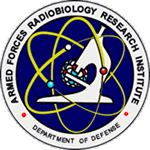
The Armed Forces Radiobiology Research Institute (AFRRI) is an American triservice research laboratory in Bethesda, Maryland chartered by Congress in 1960 and formally established in 1961. It conducts research in the field of radiobiology and related matters which are essential to the operational and medical support of the U.S. Department of Defense (DoD) and the U.S. military services. AFRRI provides services and performs cooperative research with other federal and civilian agencies and institutions.
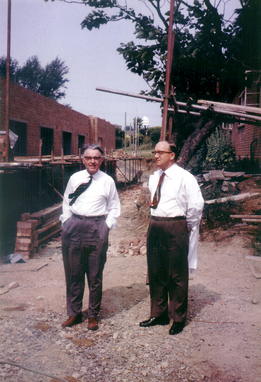
Louis Harold Gray FRS was an English physicist who worked mainly on the effects of radiation on biological systems. He was one of the earliest contributors of the field of radiobiology. Amongst many other achievements, he defined a unit of radiation dosage which was later named after him as an SI unit, the gray.
Radiobiology is a field of clinical and basic medical sciences that involves the study of the effects of ionizing radiation on living things, in particular health effects of radiation. Ionizing radiation is generally harmful and potentially lethal to living things but can have health benefits in radiation therapy for the treatment of cancer and thyrotoxicosis. Its most common impact is the induction of cancer with a latent period of years or decades after exposure. High doses can cause visually dramatic radiation burns, and/or rapid fatality through acute radiation syndrome. Controlled doses are used for medical imaging and radiotherapy.
The Janus Experiments investigated the effects of exposure to neutron radiation and gamma radiation on mice and dogs. They consisted of ten large scale experiments conducted at Argonne National Laboratory from 1972 to 1989. To explore various relationships, the studies varied radiation type, dose rates, total dose and fractionation. The work formed the basis of dozens of publications in the medical literature.

Albert Stevens (1887–1966), also known as patient CAL-1 and most radioactive human ever, was a house painter from Ohio who was subjected to an involuntary human radiation experiment and survived the highest known accumulated radiation dose in any human. On May 14, 1945, he was injected with 131 kBq of plutonium without his knowledge because it was erroneously believed that he had a terminal disease.
The committed dose in radiological protection is a measure of the stochastic health risk due to an intake of radioactive material into the human body. Stochastic in this context is defined as the probability of cancer induction and genetic damage, due to low levels of radiation. The SI unit of measure is the sievert.
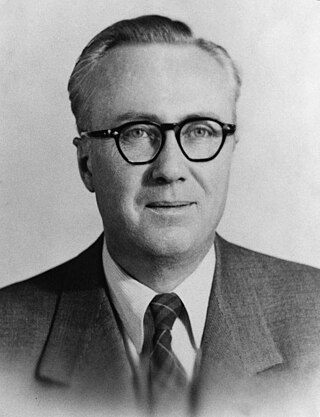
Leonidas D. Marinelli was the American radiological physicist who is best known for founding the field of Human Radiobiology and developing the Marinelli Beaker.
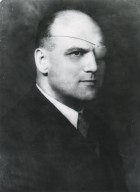
Roberts Rugh, Ph.D., radiation biologist and embryologist.
Miriam Dorothy (Posner) Finkel was a radiobiologist who made significant contributions to molecular biology. Finkel lent her name to the Finkel-Biskis-Jinkins or FBJ virus.

Wright Haskell Langham was an internationally renowned expert in the fields of plutonium exposure, aerospace and aviation medicine, Eniwetok nuclear tests, the Palomares and Greenland nuclear accidents. Sometimes Langham was referred to as Mr. Plutonium.

Ella B. Tyree was an American medical researcher. She worked in the mid-twentieth century investigating effects of radiation poisoning in animals and potential treatments.
Marvin Goldman is an American radiation biologist, known for "his highly significant contributions to the understanding of the effects of bone-seeking radionuclides—in carcinogenic characteristics of long-term strontium-90 exposures."
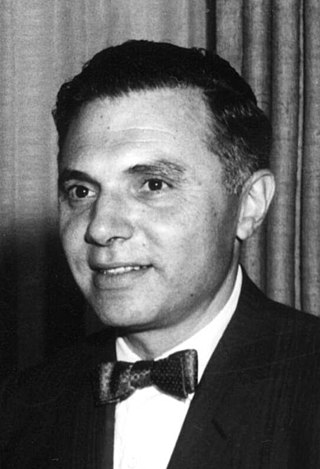
Harvey Milton Patt was an American physiologist, radiation biologist, and cell biologist, who made "important scientific contributions in cell cycle kinetics and tissue repopulation."
The Laboratory for Energy-Related Health Research Superfund Site encompasses a 25-acre area, including a former research facility that studied the impact of radiation on beagle dogs, and its adjacent landfill, at the University of California, Davis (UCD). University researchers began studying the possible effects of radiation from nuclear fallout in the 1950s, under an agreement with the unit of the United States Department of Defense that had overseen the Manhattan Project. As a result, the site became contaminated with toxic chemicals and dangerous metals such as strontium-90 and hexavalent chromium.
References
- 1 2 Paddock, Richard C. (1994). "Now They Howl About 'Beagle Club'". Los Angeles Times . Retrieved October 6, 2024.
- 1 2 3 4 5 6 7 Giraud, Eva; Hollin, Gregory (2016). "Care, Laboratory Beagles and Affective Utopia" (PDF). Theory, Culture & Society. 33 (4): 27–49. doi:10.1177/0263276415619685.
- 1 2 3 4 5 6 7 Thompson, R. C. (1989). "Life-span effects of ionizing radiation in the beagle dog: A summary account of four decades of research funded by the US Department of Energy and its predecessor agencies". International Nuclear Information System.
- ↑ Haley, Benjamin (2011). "Past and Future Work on Radiobiology Mega Studies: A Case Study at Argonne National Laboratory". Health Phys. 100 (6): 613–621. doi:10.1097/HP.0b013e3181febad3. PMC 3784403 . PMID 22004930.
- 1 2 Kasler, Dale (October 6, 2018). "UC Davis agrees to $14M cleanup of site of Cold War radiation tests on beagles". The Sacramento Bee . Retrieved October 6, 2024– via Newspapers.com.
- ↑ Sangree, Hudson (November 14, 2011). "UCD faces Superfund cleanup". The Sacramento Bee . p. A1. Retrieved October 6, 2024– via Newspapers.com.